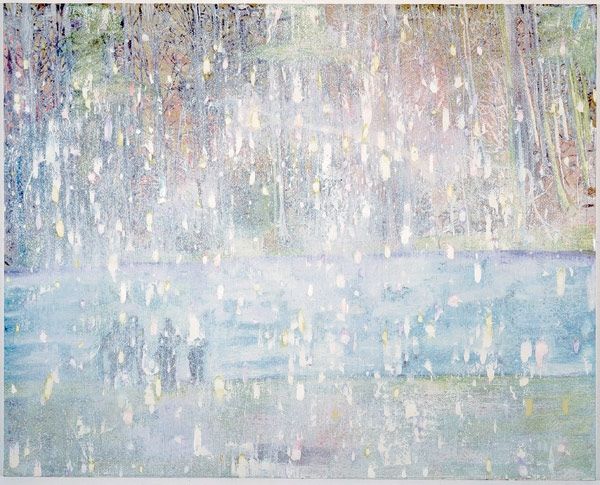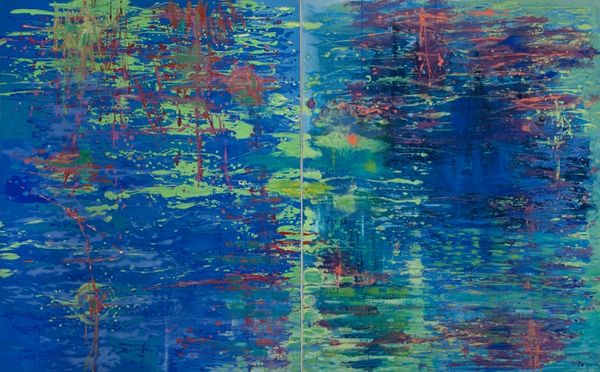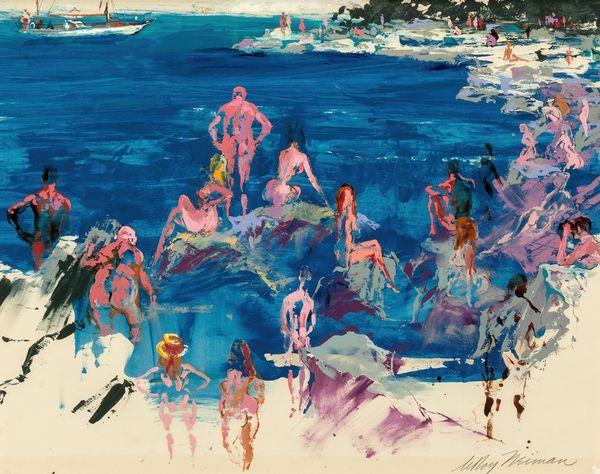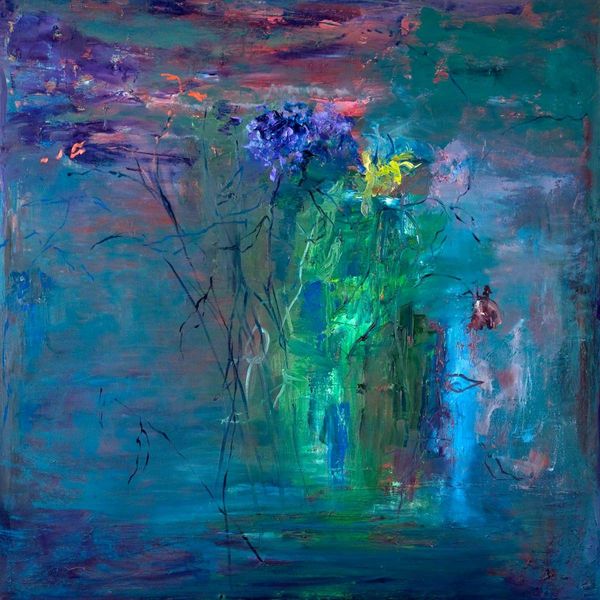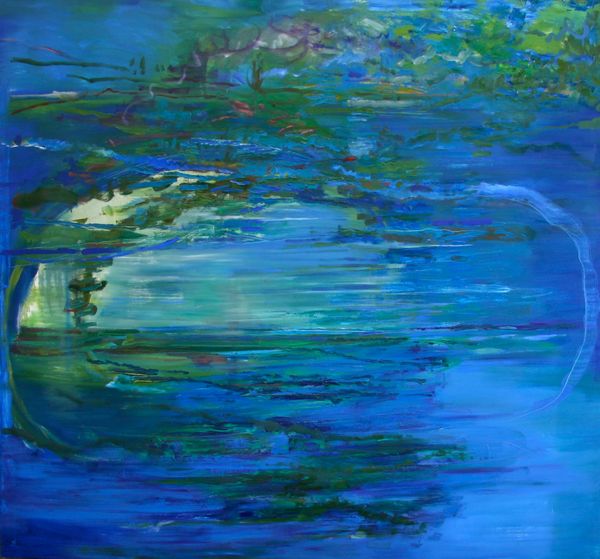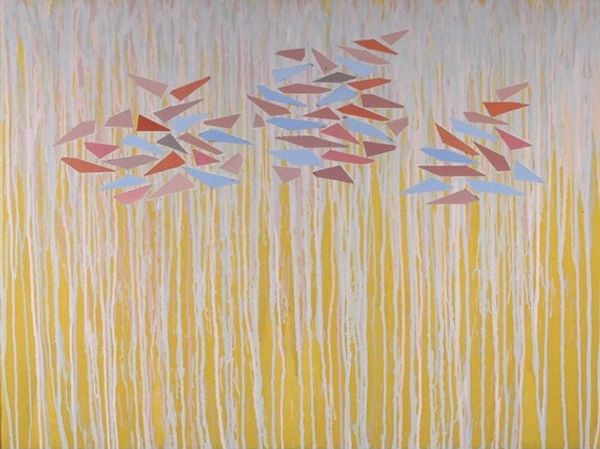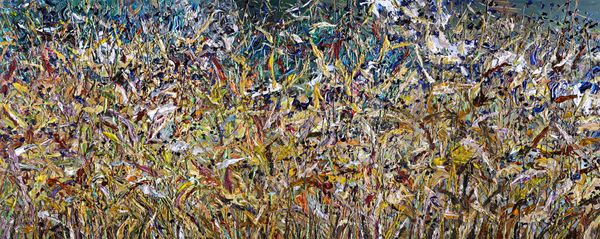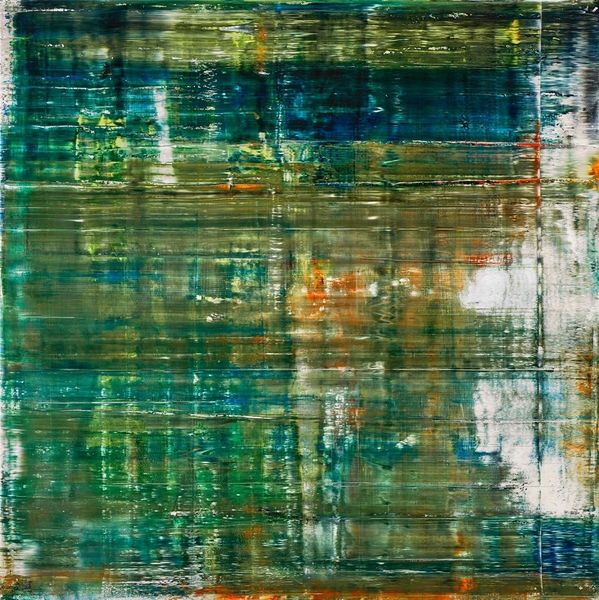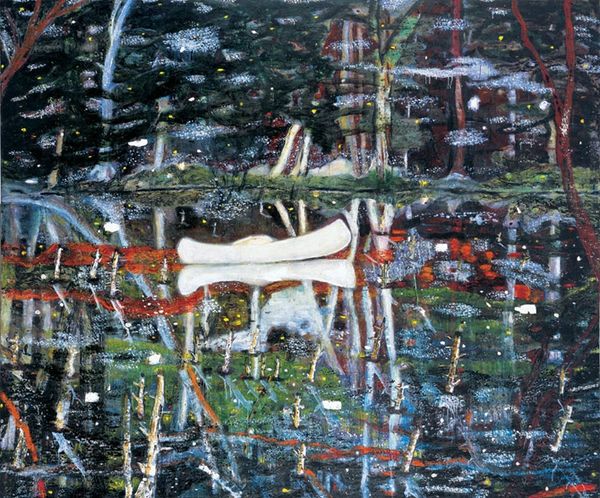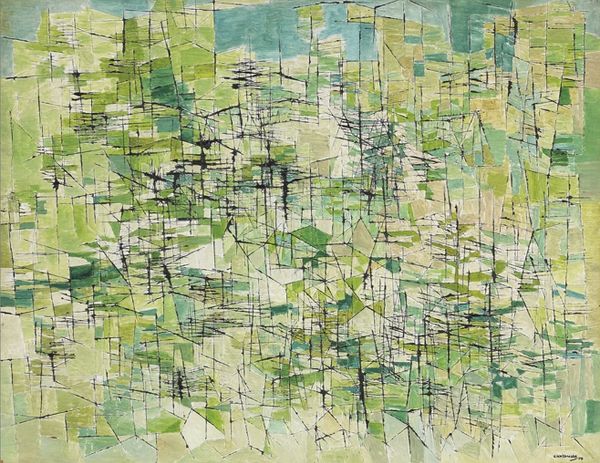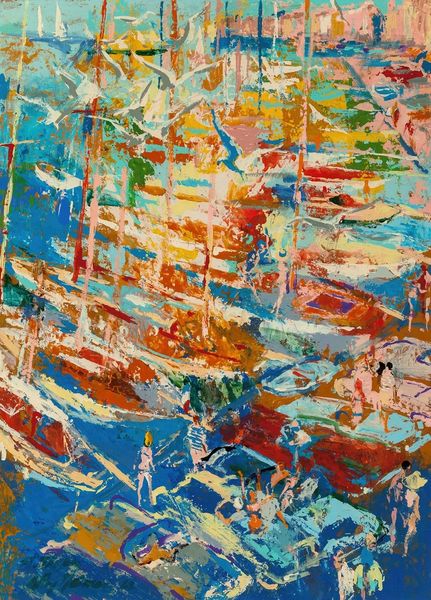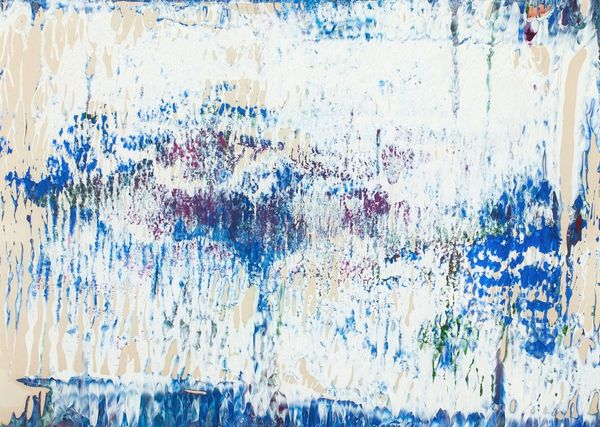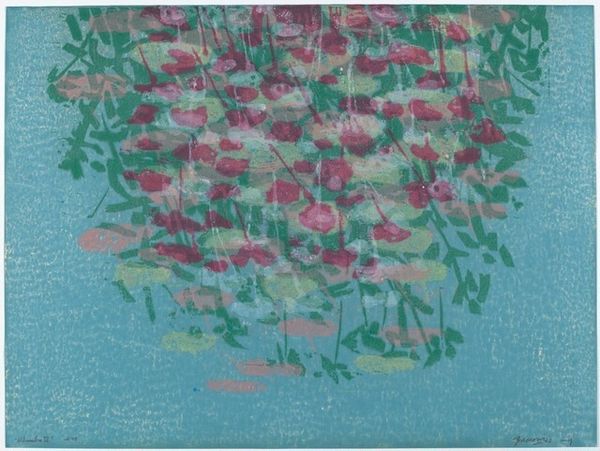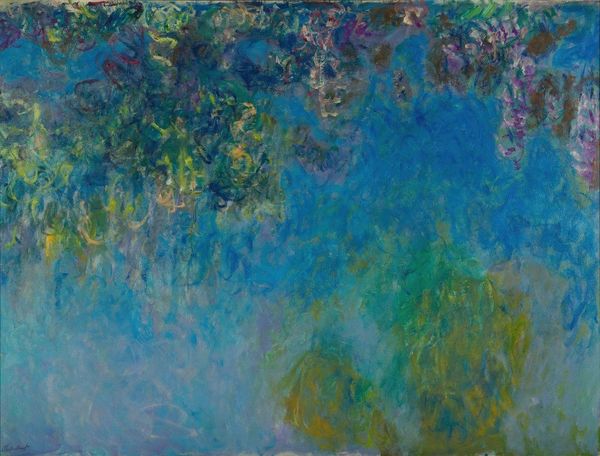
painting, acrylic-paint
#
abstract expressionism
#
abstract painting
#
painting
#
pattern
#
acrylic-paint
#
figuration
#
fluid art
#
acrylic on canvas
#
paint stroke
#
abstraction
#
modernism
Copyright: Jennifer Bartlett,Fair Use
Editor: This is Jennifer Bartlett’s "Woman Floating," painted in 1997 using acrylic paint. It feels very layered and almost like looking at something underwater. What draws your eye in this piece? Curator: I see a complex layering of material and process. The grid, constructed meticulously with paint, isn’t just a compositional element; it speaks to industrial production, almost mimicking graph paper or the weft and warp of fabric. Editor: So the grid isn't just abstract, it’s hinting at manufacturing processes? Curator: Precisely. And consider the "Woman Floating"—the figuration disrupts the rigidity of the grid. What does that contrast suggest to you about the labor involved? Think about the artist’s hand versus the implied mechanized process. Editor: That makes me think about the act of painting, the physical labor behind even abstract art. And how that contrasts with mass production. The way the brushstrokes are visible emphasizes Bartlett's physical presence. Curator: Absolutely. Even the choice of acrylic is crucial. It is, after all, a synthetic material, a product of industrial chemistry. It’s not like using oils, which carry centuries of artistic tradition and different associations. How does the acrylic itself shift the way we engage with "high art?" Editor: So it is sort of like breaking boundaries down – it challenges what materials can even be used to create art, right? I always thought of fine art being this very specific group of accepted media. Curator: Indeed. By choosing acrylic and emphasizing the grid, Bartlett interrogates those assumptions and expectations. That the woman can even float, it sort of transcends everything the canvas is meant to restrict. What would you say you take away from seeing the layers of material, context, and labor present? Editor: I’m definitely looking at materials in a new way now, recognizing how they contribute to the bigger picture, that art is not just in the image but really also from all the work that the medium went through.
Comments
No comments
Be the first to comment and join the conversation on the ultimate creative platform.
